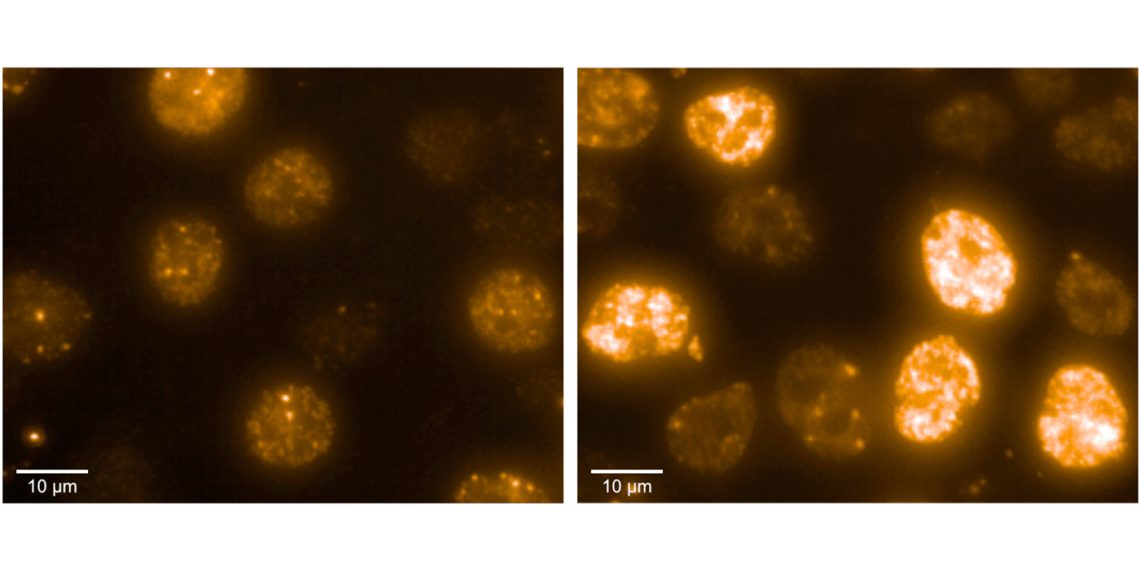The cells of certain tumors, the “neuroblastomas,” divide very quickly. This causes them problems that can be fatal for them. A new study shows how they solve this dilemma. Neuroblastomas occur predominantly in children. One particular type of these tumors is very aggressive and difficult to treat. Researchers around the world are therefore searching for an Achilles’ heel of the disease.
Around 50 percent of high-risk neuroblastomas owe their malignancy to a protein called MYCN. The substance stimulates the activity of certain genes in the cancer cell that are necessary for the growth of the tumor. But this is precisely what makes MYCN partly responsible for a dilemma that could turn out to be a significant weakness of blastomas. This is because neuroblastoma cells are also characterized by increased division activity. Before each division, the affected cell must produce a complete copy of its entire genetic information. One of the two daughter cells then receives this copy, the other the original.
At the same time, however, parts of this information — namely the tumor-specific genes activated by MYCN — still have to be read at high pressure. “The cell has to coordinate these two processes,” explains Dimitrios Papadopoulos, who conducts research at the Biozentrum in the Department of Biochemistry and Molecular Biology in Professor Martin Eilers’ research group. “Otherwise, it runs the risk of suffering significant damage.”
Complex copier creates a duplicate
It’s roughly like trying to read passages of a book while copying it at the same time. It is obvious that errors can occur in the process. It is no different in the neuroblastoma cell. There, a complex copier creates a duplicate of the genetic material, the DNA, step by step — a process called replication. At the same time, however, another process takes place, transcription. In this process, a completely different machine transcribes the DNA segments that the cell needs, since they contain the building instructions for important proteins.
Even in healthy cells, replication and transcription run to some extent in parallel. In neuroblastomas, however, MYCN significantly exacerbates this dilemma. “So a conflict occurs,” Papadopoulos says. “As a result, the DNA thread can break, for example. If this fault is not repaired quickly, it’s a death sentence for the cell.” Together with colleagues, his study explored how it counters this danger.
Support from a cell’s own shredder
According to the study, it uses two different mechanisms to do so: On the one hand, MYCN can call on the help of a kind of shredder in the cell nucleus, the RNA exosome. This prevents the creation of the transcripts that are needed for the production of proteins. The actual copier can thus carry out its work more unhindered.
If MYCN cannot summon an exosome, it alternatively recruits a molecule called BRCA1. This molecule releases DNA transcripts in the process of formation for direct destruction. In addition, as a consequence, no further transcripts are then created, so that the path for the copier is also clear.
The results of the study may also be used for future therapies. For example, the researchers hope to be able to disrupt the cooperation between MYCN and BRCA1 by using suitable active substances. “If we then additionally prevent MYCN from calling the exosome to its aid, severe DNA damage could occur in tumor cells in a clustered fashion,” explains Dimitrios Papadopoulos. “In this way, they could perhaps be killed — and in a very targeted manner, without fear of damage to other cells.”

















